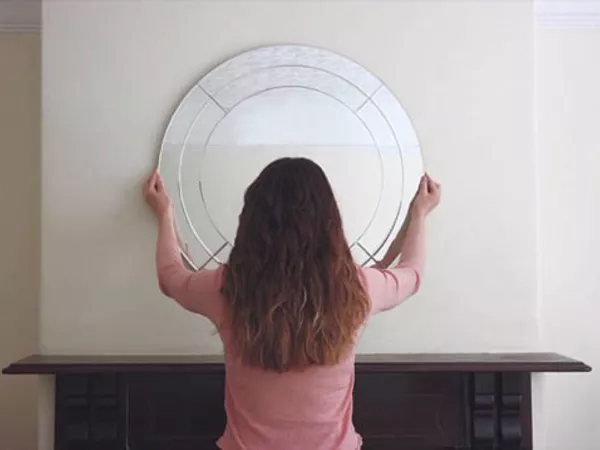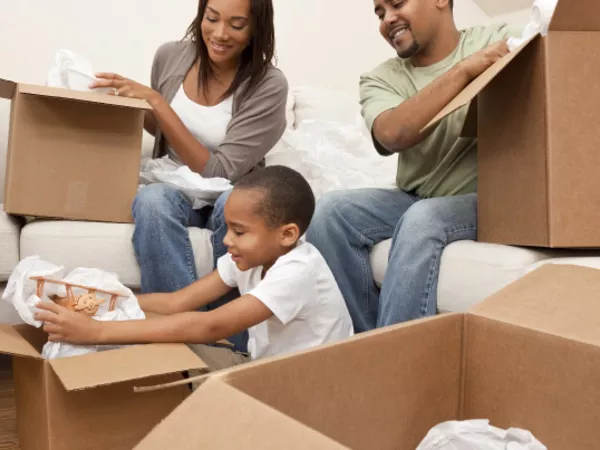How to Pack a Computer and Other Electronics
Keeping electronics safe while moving
In this digital age, protecting your computer and other electronics during your long-distance move is super important. Not only can they be expensive to replace, but they can also hold everything from family photos and videos to financial records and legal documents. Knowing how to care for your electronics throughout your move will help ensure the equipment stays safe and that you’ll be able to access your precious memories and personal information in your new home.

Preparing to move a computer
The last thing you want to do is damage your computer during transit, so packing it properly is important. Computers should always be transported in their upright position to avoid damage during moving or shipping. Follow our tips to keep your computer in its best shape during your move.
How to pack a monitor and tower
The best way to pack desktop computers is in their original packaging if you have it. If you’ve already thrown away those items, don’t worry. Just choose another sturdy box larger than your machine to transport it. Monitors can also be shipped in television boxes. Make sure the glass on your monitor isn’t close to the outside edge of the box, and use plenty of packing material.
Pro tip: Take photos of the back of your computer and monitor before you disassemble to make setup a breeze at your new place.
- Properly shut down your computer.
- Unplug all cords. (You can pack the cords in individual zip-top bags.)
- Wrap the tower and monitor in non-static Bubble Wrap®.
- Fill the bottom of your boxes with wadded packing paper.
- Place your upright wrapped components into the box.
- Fill any voids with more wadded packing paper. You may also include packages of cords in the box to help take up space.
- Seal the boxes and be sure to mark them “Fragile” and indicate the correct side up.
Moving gaming computers and custom-built PCs
Gaming computers and other custom-built PCs require much of the same care as regular computers, but with one key difference: securing the graphics card. Graphics cards on gaming PCs are heavy and can get damaged during moving.
The safest way to transport a gaming PC is to remove the graphics card and pack it separately. If you’re unable to do so, you’ll need to open the computer case to support the graphics card with packing material. Consider using an expandable product (like Instapak Quick®) that fills in the empty spaces in your computer case for best results.
If your machine is water cooled, don’t forget to drain all fluids before packing your computer, as these can leak during shipping and moving.
Once you have everything secure in your computer case, complete steps 3-7 above to finish packing.
Packing a computer for shipping
If you need to ship a computer, double-boxing is safest. After you do the steps above, follow these additional steps to protect your shipment:
- Place the sealed computer box inside a larger box (be sure to line it with packing paper first).
- Fill the sides and top of the box with packing paper for extra protection.
- Seal it with tape.
- Give the package a gentle shake to make sure nothing moves around inside.
- Label the box “Fragile” and indicate the correct side up.
Packing other electronics
All electronics need to be packed in sturdy boxes with adequate packing material to prevent damage to your items. Your owner’s manual may have additional instructions. For some electronics like large screen televisions, you can purchase boxes specifically for moving these items if you no longer have your original box. Follow the steps below to prepare your items for safe transport:
- Make sure to secure any cords or moving parts on your electronics.
- Wrap your device in Bubble Wrap®.
- Use plenty of packing material to protect your items from drops and bumps.
- Give your package a shake test to make sure nothing moves around. If anything moves, add more packing materials until you get a secure fit.
- Seal the box with tape and mark it “Fragile.”
Laptops, tablets and cellphones
Most people like to carry laptops, tablets and cellphones with them during their move. If you want to pack these items, they can be packed securely just like your other electronics.
Need to dispose of electronics?
If your electronics aren’t making the move with you, you’ll want to dispose of them properly. Look for a reputable e-waste recycling center in your area for broken electronics. Donate working electronics to a local charity that can repurpose the items.
Have questions about packing your computers or other electronics?
Leave a comment below, and we’ll be happy to help. Be sure to check out our other packing tips to help you with everything for your move.
More articles you might like...



